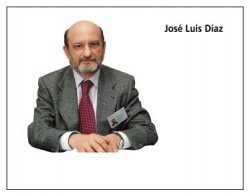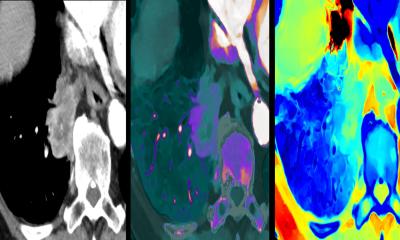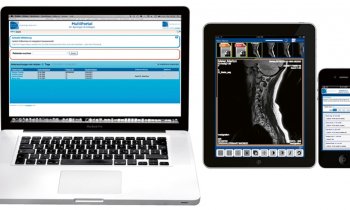Fast forward for clinical reporting
Digital dictation devices can read a patient's data, automatically assign information to the relevant report and interpret human speech into a text version.
Armin Scheuer reports

When Philips Dictation Systems launched the first analogue dictation device in 1954, doctors soon made it standard practice to dictate reports then despatch cassettes to typists. Today about 50% of European medical professionals work in this way. However, cassettes are now outmoded. Digital dictation has eliminated cassette despatch, and potential loss or damage of the contents. Directed to a PC, or saved on an SD memory card, each digital dictation becomes immediately available in audio file format, for typists to transcribe. In addition, because the newer digital devices have clearer sound quality than analogue devices, errors and corrections are significantly reduced.
Dictating directly into the PC
Digital dictation devices offer a number of user benefits. For example, the Philips SpeechMike, is a microphone, barcode scanner, speaker and mouse in one. Connected directly to a computer via USB interface, the doctor can record and play back dictations, navigate through PC applications and read in-patient data electronically.
The combination of dictation device and barcode scanner has become extremely popular, given the importance of assigning the correct medical report to the correct patient with 100% accuracy. Previously, doctors had to carefully dictate the patient number, name, sex, age, address etc; using a barcode scanner, this data can be read in from the patient record automatically - a huge time saving for the doctor and typists, plus minimisation of the risk of incorrect data assignment.
On the move
The Digital.Pocket.Memo.9450.VC understands voice commands, which is highly practical for patient visits, when a doctor could record several short dictations. Prior or at any point of a dictation, he simply says the patient number or type of document and the device can automatically append the correct patient number to the recorded file. Back at his desk, the doctor then transfers the files to his computer or sends them to his secretary over the network or via email. Demographic data, such as a patient’s name, age, sex, or information such as the type of report, are already in the document. Benefits are twofold: the doctor can assign dictations quickly and easily to send for transcription, while the secretary does not need to add key data manually.
Accelerating report turn-around
Digital speech processing has opened a new range of workflow options. For example, if dictation volumes peak, dictations can be sent to a temporary typist, via a secure internet connection, and the finished document returned in the same way. Integrated network solutions such as these offer major benefits to typists. They allocate pending dictations according to available employees and current workload, and the software even automatically assigns difficult files to typists with relevant experience.
To eliminate manual transcription and to offer physicians the option to finalize their reports right away, speech recognition technology has established itself as a convenient tool. In the United Kingdom Philips SpeechMagic won the E-Health Innovation Awards, in the category ‘Best use of e-health to improve efficiency’.
Similarly, the system was chosen in Spain as one of the best technology ideas of 2004 by the economics magazine Actualidad Económica. Reína Sofia University Hospital, in Cordoba, one of the first to adopt speech recognition in Spain, began using SpeechMagic in its radiology department a year ago. The benefits - plus a successful pilot project with the MultiMed ConText (specialised recognition vocabulary covering over 90% of all medical disciplines), formed the basis for the expansion of speech recognition beyond radiology.
According to the hospital’s general director, José Luis Díaz, SpeechMagic has proven its positive effects, such as an increase in efficiency and flexibility. In addition, he said: ‘The software provides features specifically tailored for the creation of medical reports, which stands in contrast to other systems we’ve tried before.’
SpeechMagic largely automates processes and its high recognition accuracy improves the quality of reports and minimizes the risk of errors. Mr Díaz said the resulting improved workflow, with immediate availability of medical reports, has saved time and improved patient service because treatment can be started immediately after the examination.
The hospital has currently expanded the system to various specialities including internal medicine, endocrinology, digestive surgery and rehabilitation. Other areas will follow shortly, until all 300 physicians are equipped with speech recognition.
Philips reports that over 25% of Spain’s radiologists are already working with SpeechMagic, making it the country’s market-leading medical speech recognition software. Globally the firm’s share of the dictation market is also 25%.
07.08.2006











